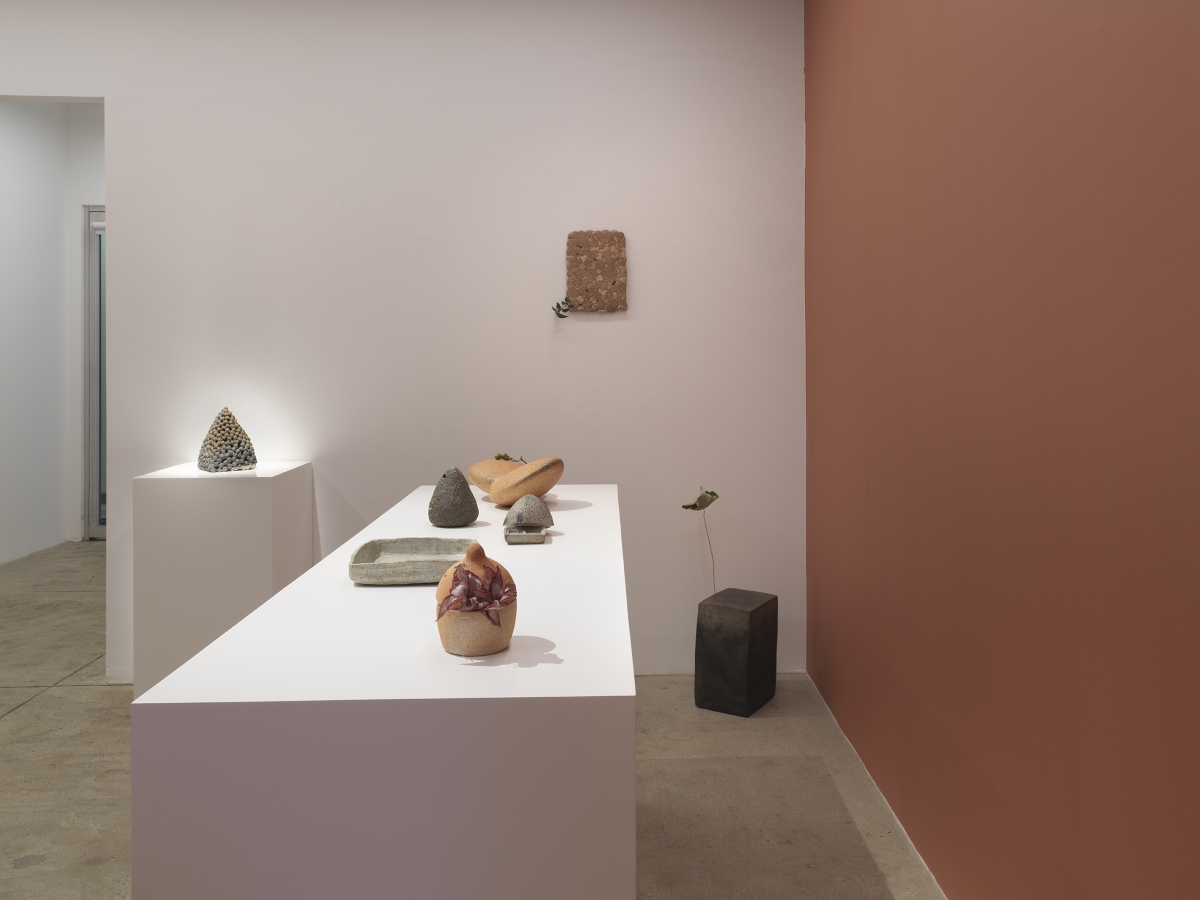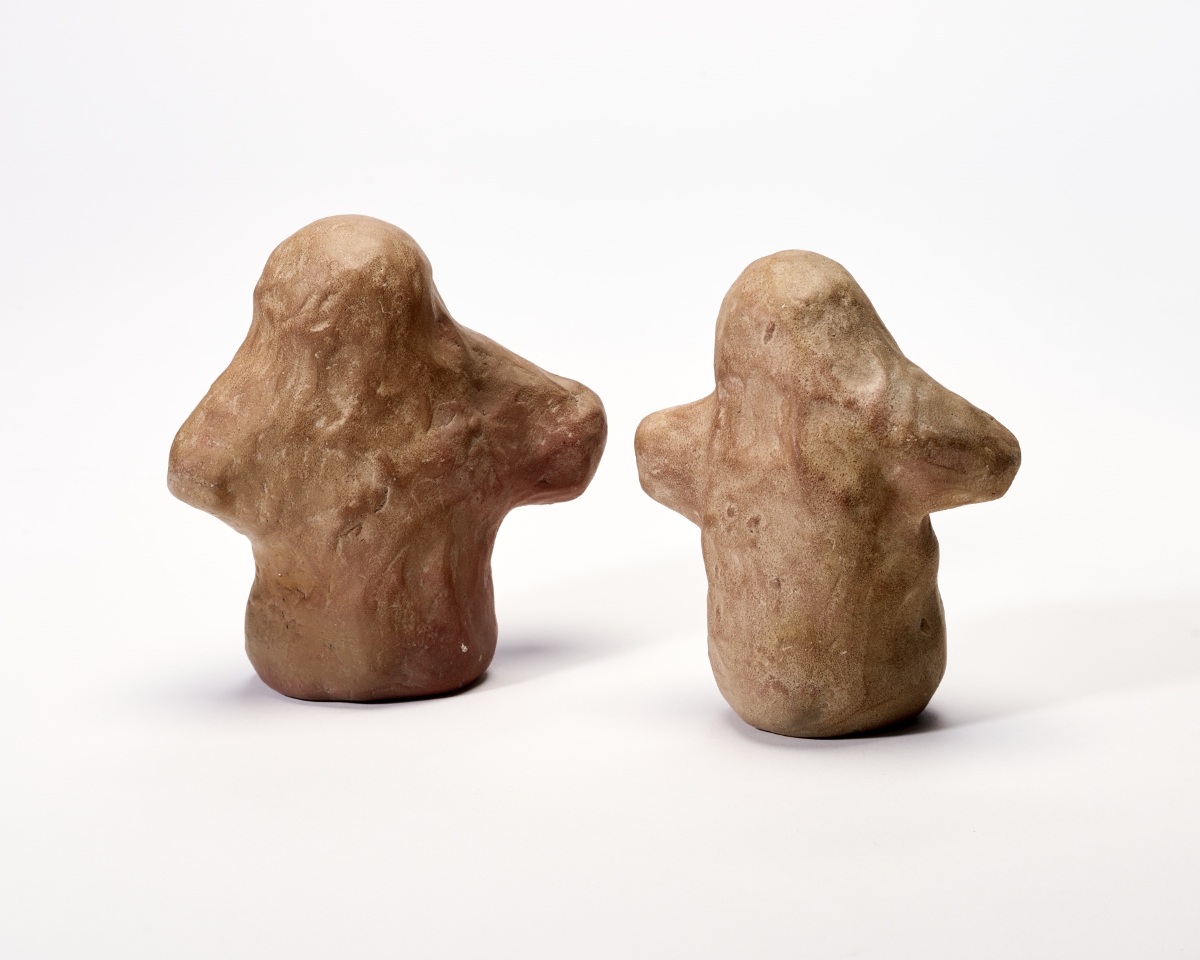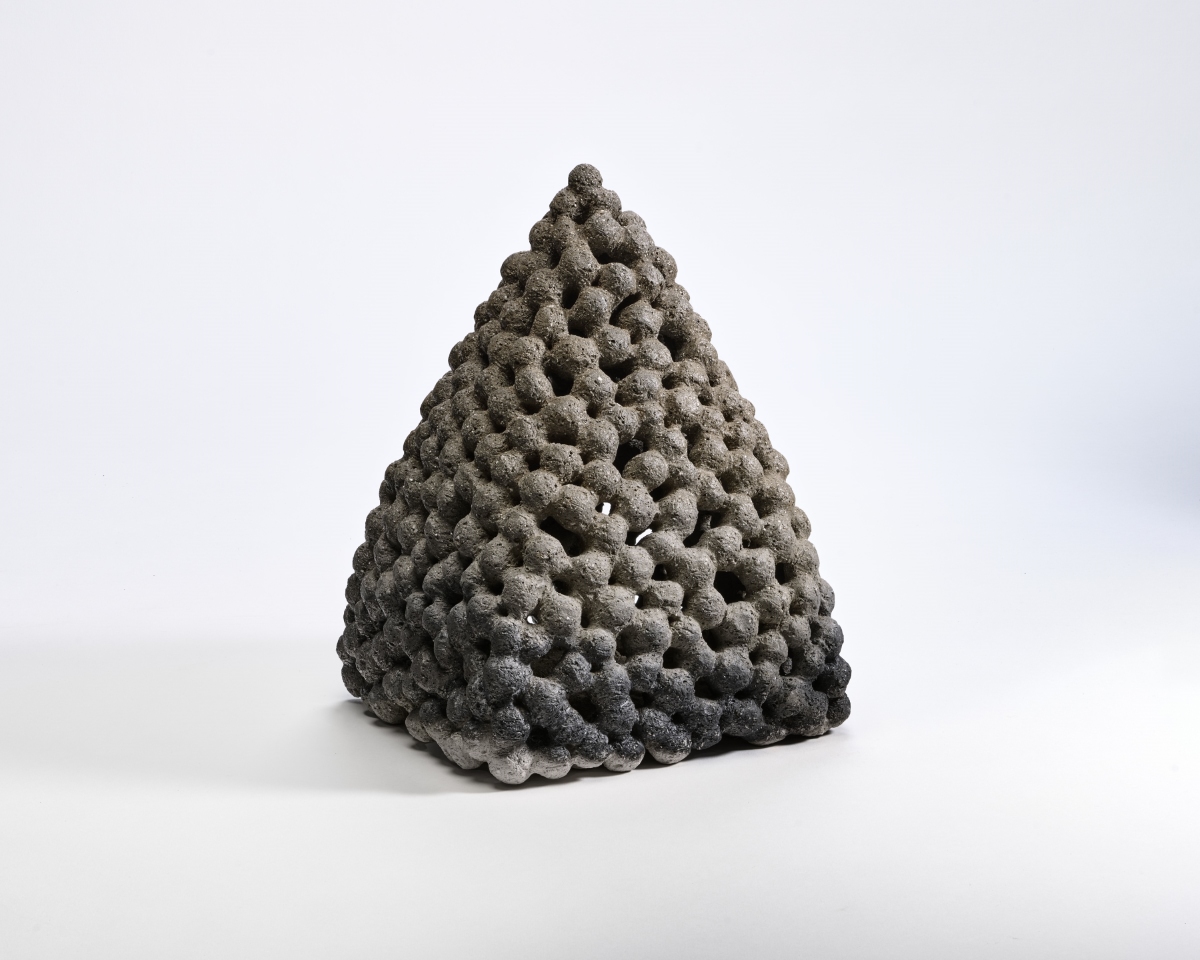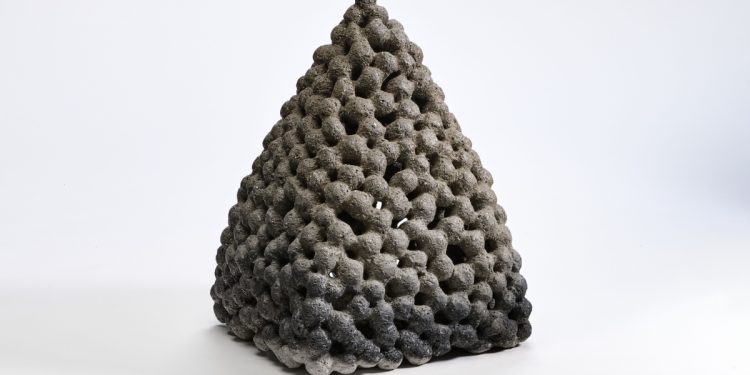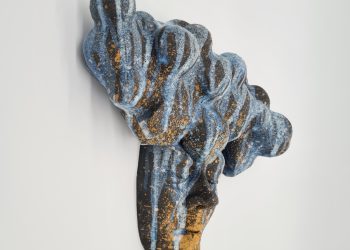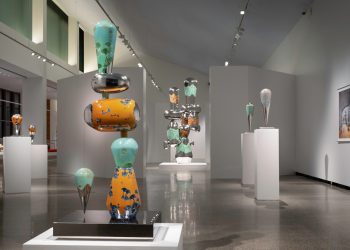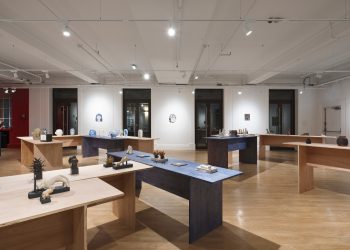Eiji Uematsu
Eiji Uematsu (b. 1949, Kobe, Japan) is a ceramic artist based in Iga, Mie Prefecture, Japan. Uematsu began experimenting with clay as a student at a Tokyo trade school in the early 1970s, initially engaged in painting and lithography before being taken by the materiality and possibilities of clay. At twenty-three years old he began experimenting with ceramic reliefs and studying various types of clay. Then in 1975, Uematsu took a job at a pottery factory in Shigaraki, Shiga Prefecture, famous for its large-scale production of Shigaraki-ware. There he received fundamental ceramic training and continued to produce his own work out of his home and studio in the adjacent farming town of Ayama. In 1982, following a change of work, Uematsu moved to Iga, Mie Prefecture, where he expanded the scope of his practice by constructing a firewood-and kerosene-burning kiln and experimenting with open-burning, pit-fired pottery. Three years after moving to Iga, Uematsu began presenting his clay works, which—with their sense of vitality and experimentation—transcend traditional categories of fine art, craft, and ceramics.
The artist’s sensibilities borrow, in part, from the lineage of Shigaraki-ware craftsmen, an important historical center of stone-ware production near Kyoto in central Honshu and the source of clay used by many ceramic artists throughout Japan. Uematsu sources all of his clay from nearby Iga, one of richest clay-mining deposits in Japan due to its location on the clay bed of the prehistoric Lake Biwa. Paired with an abundance of red pine forest for kiln fuel, the region has historically been a national center of ceramic production. Iga-sourced clay is extremely heat-resistant, and thus Iga earthenware is characterized by its burnt appearance from high-temperature firing, and resultantly strong, tight, heat-resistant bodies.
Uematsu couples the Shigaraki-ware lineage with the conceptual modes of “objet,” avant-garde ceramic sculpture artists such as Yagi Kazuo and other Japanese artists of the Shikōkai and Sōdeisha movements. Uematsu’s work and its relationship to land is also often discussed in relation to Earthworks. Unique to his practice, however, is the artist’s profound commitment to highlighting the material characteristics of clay itself: rather than taking the ornamental approach of imposing onto the clay as a vehicle for personal expression and form, Uematsu’s ceramic bodies center upon the speckled, pebbled, highly-textured visual variety of his clay composites, free of glaze. The range of colors derive purely from thoughtful mixtures of clay and careful variations in firing.
Like the Mono-ha (School of Things) artists of his generation, Uematsu works within conceptual frameworks that locate works of art not in their objective, material form, but in the immaterial structures through which they reveal themselves: in affective sensations arising from charged “encounters,” revealing the essential nature of things. His era’s artists endeavored to liberate work from intentions, methods, or concepts through intimate contact with the world, or shigusa: an interactive act that dissolves the distinctions between subject and object. In rethinking how we conceive of objects, or “things” themselves, Uematsu has resisted labeling himself, even as an artist, throughout his career—his only commitment being to the clay itself.
Over the course of his five-decade long career as an artist, Eiji Uematsu has produced exceptional ceramic work with a deep sensitivity to the material and ontological qualities of clay, as well as a commitment to keen observation of the natural world. In his own words, Uematsu does not see his ceramic practice as producing new forms, but as drawing out the shapes that have already existed in the earth from its beginning, and distinctively without the use of glazing. Actively evading categorization as artist or ceramicist, Uematsu has often described his artistic drive as the desire of “not expressing, not making,” but to “examine the qualities of clay.”
Since the 1980s, Uematsu has been exhibiting clay work in numerous solo and group exhibitions at numerous venues including the Shigaraki Ceramic Cultural Park, the Kyoto City University of Art, the National Museum of Modern Art, Tokyo, and others, with works ranging from site-specific installation, interactive pieces, ceramic vessels, and sculpture. Uematsu is currently based in Iga, Mie Prefecture, Japan, working out of his home and studio.
Visit Eiji Uematsu’s profile on Alison Bradley Projects and ARTCOURT Gallery‘s websites.
Featured work
Works in Clay: Eiji Uematsu, 2023
